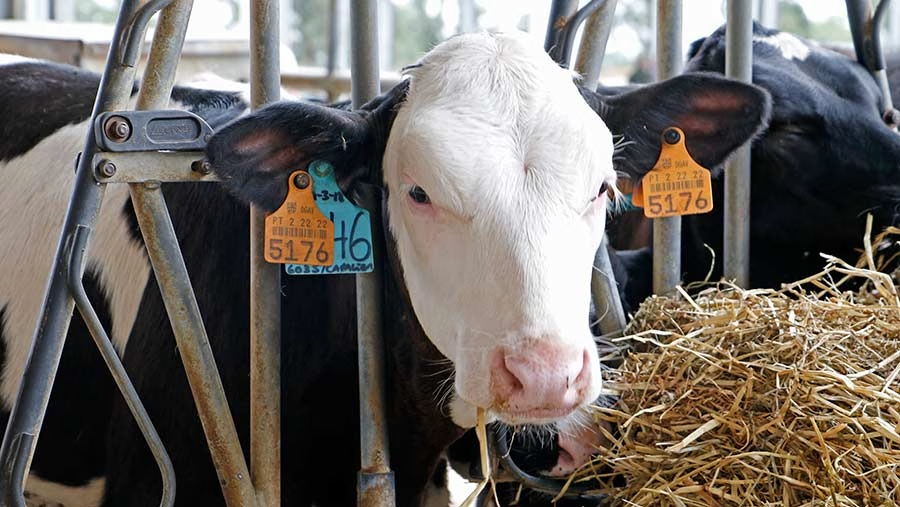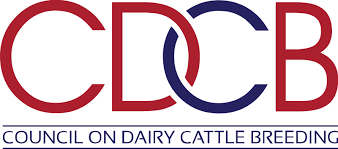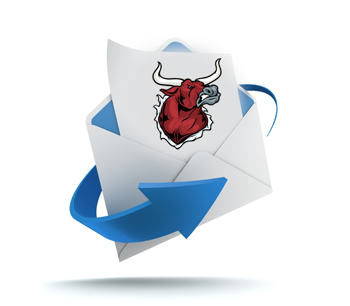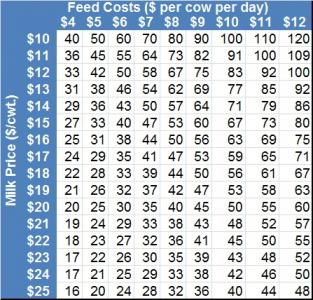U.S. dairy faces a perfect storm: 47-year low heifer counts, $4,000 springers, and beef-cross mania. Will farmers pivot fast enough to avoid milking herd collapse, or will the next decade’s dairy aisles dry? Dive into the crisis and the fightback strategies.
The numbers don’t lie: America’s dairy farms run on fumes. With heifer inventories cratering to 1978 levels and beef-cross calves now outselling some used Teslas at $1,200 a pop, dairy producers face a brutal ultimatum—cash in on today’s beef gold rush or gamble tomorrow’s milking herds into oblivion. The USDA’s January bombshell? Just 3.914 million heifers remain nationwide, down nearly 1% in a year, while springing heifers fetch $4,000+ a head in desperate bidding wars. ‘We’re burning through generations of genetics to pay the feed bill,’ admits Sarah Klecker, a Wisconsin dairywoman now buying replacements at triple what she sold them for. This isn’t just a shortage—it’s a high-stakes reshuffle of an entire industry’s future. Will farmers pivot fast enough to avoid milking herd collapse, or will the next decade’s dairy aisles dry? Grab your boots. We’re diving into the trenches.
Walking the Beef-Dairy Tightrope—Don’t Look Down!
Alright, let’s cut through the BS. You’ve seen the headlines—“Beef-cross calves outsell used cars!”—but what’s happening in your breeding barn? Why is every farmer and their neighbor suddenly obsessed with Angus bulls? Let’s break it down like we’re leaning on the feed bunk, coffee in hand.
“Profit Today, Regret Tomorrow?” – The Beef-Dairy Dilemma
Look, I get it. When beef-cross calves hit $1,200 a pop at Turlock last January, even my tractor-driving dog sat up and took notice. But here’s the kicker—while breeding your lower-tier girls to beef bulls pays the feed bill today, it’s like robbing Peter to pay Paul. Ask Sarah Klecker up in Wisconsin. She sold 80% of her calves to Angus bulls last year, cleared her debts, and then got sucker-punched buying back springers at $3,800 a head. “Felt like trading my pickup for a bicycle,” she told me.
Wait, scratch that—it’s not just about the money. This ain’t your grandpa’s dairy game. We’re talking 70% of U.S. dairies now playing this high-stakes breeding roulette. But why? Let’s crunch numbers even your accountant would high-five:
- Sexed semen: 63% of significant operations use it on their cream-of-the-crop cows (think top 25%). Translation? More heifers from your best milkers. Smart, right?
- Beef bulls for the B-team: The rest get Wagyu or Angus dates—cha-ching – $300–$1,000 more per calf than plain-Jane Holsteins.
- Retention roulette: Nationwide, we keep only 28% of heifers compared to 52% a decade ago. That’s like betting half your poker chips every hand.
But hold up – where’s the trapdoor here? “What happens when I need replacements and my heifer pipeline’s bone dry?” Exactly.
“So… Do I Starve Now or Later?” – Balancing Acts
Let’s get tactical. You’re not stuck choosing between bankruptcy and herd collapse. Take Ohio’s HeiferTech – for $75 a pop, they’ll genomic test your heifers with 92% accuracy. Translation? You’ll know by week two if that calf’s future is the milk tank or the feedlot.
Or peek at Kansas’ playbook: Feedlots are bulking up heifers at 2.5 lbs/day for just $2.75 daily. That’s cheaper than my morning latte habit. “But what if I can’t afford contracts?” I hear ya. That’s where…
The “Don’t Be a Statistic” Checklist
- Genomics or bust: Test early and cull hard. That $75 test could save you $3,800 in springer costs later.
- Tier your herd: Sexed semen for your MVPs, beef bulls for the benchwarmers.
- Watch your rearview: If retention drops below 30%, you’re flirting with a cliff edge.
Bottom line? This beef-dairy tango can pay – but trip over your feet, and you’ll faceplant into a heifer shortage. Next time we chat, I’ll show you how to dodge HPAI’s sucker punches.
HPAI’s Fertility Sucker Punch – What They’re Not Telling You
Alright, let’s get honest about HPAI. Did you think bird flu was just a chicken problem? Think again. This bugger’s been moonlighting as a heifer wrecking ball—and folks, the damage ain’t pretty. Grab your gloves; we’re diving into the barnyard gut punch nobody saw coming.
“Wait, My Heifers Too?!” – How HPAI Hijacked Herd Math
Yeah, we all saw the headlines—“Bird Flu Jumps to Cattle!”—but here’s what the clickbait won’t tell you: HPAI didn’t just knock cows sideways. It sucker-punched your future milkers right in the ovaries. Let me spell it out:
Texas A&M tracked heifers that survived last year’s outbreak. The kicker? Even the “recovered” ones churned out 18% less milk in their first lactation. Eighteen percent! That’s like buying a new tractor and finding out it plows 18% slower.
But wait, scratch that—it’s worse. Dr. Emily Torres, the sharp mind behind the study, dropped this bomb: “9% of exposed heifers have ovarian scarring. They’re walking infertility time bombs.”
Regional Rundown – Who Got Hit Worst?
HPAI didn’t play fair. Check how your area fared (and grab a stiff drink if you’re in California):
- California: Took a 15% conception rate nosedive. Heifers hit puberty 22 days later? That’s three extra weeks of feed bills, folks.
- Midwest: “Only” 8% fewer pregnancies. But hey, those heifers still showed up 14 days late to the breeding party.
- Southwest: Split the difference with 12% fewer conceptions and 18-day delays. Oh, and 19% more cows got the boot.
Source: USDA’s February gut-punch report
“But my herd tested clean!” I hear you yell. Here’s the kicker: Even exposed heifers who fought off the virus are limping into lactation. Think of it like COVID long-haulers… but for cows.
The Silent Budget Killer – Milk Loss You Can’t Afford
Let’s talk cash. That 18% milk drop? On a 100-cow herd averaging 24,000 lbs/cow, that’s 432,000 lbs of milk gone poof. At $23/cwt? $99,360 evaporated. Yikes.
“How do I even test for this?” Easy. Torres’ team says to run PCR tests on replacement candidates and look for viral residues in blood or milk. It costs about $12/test, but that’s cheaper than raising a dud heifer for two years.
Your HPAI Game Plan – No BS
- Test, don’t guess: Screen every replacement for viral leftovers. No exceptions.
- Cull hard: Ovarian scarring? Send her to the burger line. Harsh? Maybe. Smart? Absolutely.
- Pad your numbers: If HPAI clipped your conception rates, bump your breeding targets by 10-15%.
Bottom line? HPAI didn’t just cost you sick days—it mortgaged your herd’s future. Next time we chat, I’ll show you how Midwest dairies are fighting back with UV barns and immune boosters. For now? Test those heifers. Your 2026 self will thank you.
Regional Roulette – Where’s Your Dairy’s Sweet Spot?
Let’s play a game. Grab a map, close your eyes, and point. Where you land could mean the difference between bankruptcy and boom times. Wild, right? From California’s H2-Oh-No crisis to Texas’ cowboy capitalism, America’s dairy regions are playing by wildly different rulebooks. Buckle up—we’re taking a road trip.
California: Where Water Costs More Than Heifers (No Joke)
Scene: Central Valley, 2025. Dust swirls around a “For Sale” sign on a dried-up alfalfa field. California dairies aren’t just battling HPAI—they’re fighting $1,200/acre-foot water bills (up 30% since ‘23). Result?
- Milk production: Down 6.8% last year
- Cows culled: 62,000 (thanks, bird flu)
- Desperation move: Hauling in Idaho heifers at $3,500/head
Wait—Idaho?? Yep. MilkyWay Farms near Fresno swapped 200 homegrown heifers for 150 Idaho imports. “Cheaper than drilling another well,” the manager shrugged. But here’s the kicker: Those Idaho girls aren’t bred for 110° heat. “We’re running a bovine sauna experiment,” he admits.
“Why stick around?” Good question. Tax breaks? Nostalgia? Stockton cheese plant loyalty? Your guess beats mine.
Texas: Go Big or Go Home (But Maybe Go Home?)
Meanwhile, Texas dairies are expanding like they’ve got a death wish—or +7.5% herd growth in 2024, depending on who you ask. Their secret?
- Jersey crosses: 40% of new calves because Holsteins melt like ice cream in August.
- Mexico exports: 72% of beef-cross calves head south… for now
- Living dangerously: Ignoring Mexico’s 25% tariff threat on $480M of beef
Hold up—tariffs? Oh yeah. Texas dairies could bleed $120M overnight if Mexico pulls that trigger. “We’re bettin’ on AMLO getting voted out,” drawls Amarillo’s biggest producer. Famous last words? Maybe. But hey, everything’s bigger in Texas—including the brass ones.
Midwest: Geriatric Cows & Co-op Hustles
Now, let’s talk about the Midwest’s 3.2 lactation average. Translation? Your grandma’s favorite milk cow is still pumping out butterfat. But here’s the rub: Older cows mean slower rebounds. Enter DairyHeard MN—a co-op sharing 500 springers across 12 farms like a bovine timeshare.
How does that work? Simple:
- Farm A needs 50 heifers now for expansion
- Farm B has 60 extras after culling
- Co-op brokers the swap for $35/day per head
“It’s like Tinder for heifers,” quips a Wisconsin participant. Swipe right on that productivity!
Bottom Line? Your zip code dictates your dairy destiny these days. California’s playing survivalist, Texas is gambling on geopolitics, and the Midwest’s out here inventing cow collectives. Wherever you are, one truth holds: Adapt or get milked dry.
The Genetic Elephant in the Parlor – Are We Breeding Ourselves Into a Corner?
Let’s get uncomfortable for a minute. Sure, beef-cross calves are fattening wallets now—but what happens when your real moneymakers (the ones making milk) start backsliding genetically? Spoiler: It ain’t pretty. Grab a seat. We’re diving into dairy’s dirty little secret.
“Wait, My Cows Are Getting Dumber?!” – The Milk EPD Crash
Here’s the kicker: While we’ve been playing matchmaker between Holsteins and Angus, milk genetics have snoozed. Pre-2020, we boosted milk EPDs by 87 lbs/year. Now? A pathetic 43 lbs/year. That’s like swapping your GPS for a compass. Purdue economists crunched the numbers: Every 10% drop in replacements slashes U.S. milk output by 2.3B lbs in five years.
“But I’m still hitting production targets!” Yeah, for now. Projections show 2030 yields tanking to 26,900 lbs/cow—4% below where we should be. That’s $920 lost annually per 100 cows at today’s prices. Ouch.
Your Genetic Survival Kit—No Lab Coat Required
- Audit your EPDs: Sound the alarms if your herd’s milk gains lag behind +50 lbs/year.
- Diversify breeding: Allocate at least 30% of cows to dairy-only matings. Yes, even that B-tier cow.
- Join a gene bank: Your breed association’s freezer might save your bacon (er, milk) in 2030.
Bottom line? We’re at a crossroads—chase quick beef bucks or invest in the udders that built this industry—your call. But remember: once. Those milk genes fade, and they’re hell to resurrect.
Policy Wars & Trade Tinderboxes—Your Survival Cheat Sheet
Let’s cut through the red tape, folks. While you’re busy calving heifers and dodging HPAI, Uncle Sam and our neighbors are playing chess with your livelihood. Want to know how to avoid getting checked? Let’s decode the madness.
Uncle Sam’s Safety Net (With Strings Attached)
Meet the USDA Heifer Insurance Pilot—the closest thing to a government hug you’ll ever get. Here’s the skinny:
- Covers 60% of rearing costs if springers tank below $2,800/head (aka ”the oh-crap threshold”)
- Catch? You heifers— keep ≥30% heifers—no beef bonanzas allowed
- 2025 signups: 8,100 farms (12% of you) rolled the dice
“Why should I care?” Imagine feed prices spike, springers crash to $2,500, and Uncle Sam cuts you a check for $1,680/heifer (60% of $2,800). That’s the difference between folding and fighting another day.
But wait—“What if I’m at 29% retention?” Tough luck, partner. Rules are rules. It’s time to audit those heifer counts like your subsidy depends on them… because it does.
Mexico & Canada: Frenemies With Benefits
Now let’s cross the border—where $1.5B in dairy-beef trade hangs by a thread:
| Country | Threat | Financial Hit | Your Risk |
| Mexico | 25% tariff on U.S. dairy-beef | $480M in exports | Texas/West screwed |
| Canada | Hemoglobin tests on crosses | 40% carcass rejects | Upper Midwest woes |
Dairy lobbyist Mitch Davis (yes, that guy in the fancy boots) drops truth bombs:
“We’re begging for a ‘dual-use’ loophole. No deal? Say goodbye to 10¢/lb on your culls.”
Translation: If Canada’s new test sticks, your beef-cross calves could get turned back at the border like expired passports.
The “Don’t Get Played” Checklist
- Run your retention numbers. If you’re at 28%, work to reach 30% before the USDA deadline.
- Diversify exports – Got contacts in Vietnam? Now’s the time to slide into their DMs.
- Lobby Smarter – Your state dairy group’s Zoom call? Log in.
Bottom line? Policy ain’t just for suits in D.C. anymore. Whether it’s hedging bets with USDA insurance or dodging tariff shrapnel, your moves this season will echo for years.
From Crisis to Comeback – How One Dairy Turned Desperation Into Genius
Ever feel like your heifer math just isn’t adding up? Take a page from Klecker Dairy in Wisconsin. Last year, they needed 120 springers… and came up 60 short. Instead of panicking, they threw four Hail Mary passes that’d make Aaron Rodgers proud. Let’s break down their playbook.
“We Were 50% Screwed” – The Klecker Wake-Up Call.
Picture this: You’ve got barns ready, feed lined up, and… half the heifers you need. “Felt like showing up to harvest with half a combine,” admits Sarah Klecker. But here’s how they clawed back:
The Klecker Blueprint – Four Moves That Saved Their Bacon
- Sexed Semen Smackdown
- Target: Top 30% cows
- Result: 90% heifer calves (vs. 45% with conventional semen)
- “Why waste beef bulls on your MVPs?” Sarah says.
- Genomic Guillotine
- Spent: $75/heifer testing
- Saved: $3,200/heifer by culling low-EPD calves at 2 weeks
- Pro tip: “We nixed 30% of calves early. Ruthless? Yes. Profitable? Hell, yes.”
- Beef-Bottom 50%
- Strategy: Angus bulls on lower-tier cows
- Profit: $82,000 (enough to buy 24 springers outright)
- Heifer Time-Sharing
- Deal: Leased 60 springers at $35/day through DairyCoop WI
- “Like Uber for heifers—why own when you can rent?”
The Scoreboard – Did It Work?
| Metric | Before | After |
| Herd Renewal Rate | 50% | 95% |
| Cost/Springer | $3,800 | $2,964 |
| Stress-Induced Bald Spots | 3 | 0 |
Source: Klecker’s 2024 Financials (and Sarah’s hairdresser)
“But what about long-term costs?” Smart question. Those leased heifers? They went back post-calving. But Klecker’s now raising 40 extra homegrown replacements as insurance.
Your Turn – Steal These Moves
- Triage your herd: Sexed semen on elites, beef bulls on the rest.
- Test early, cull hard: Genomics pay for themselves in 3 calves.
- Share the pain: Co-ops aren’t just for hippies anymore.
Bottom line? Klecker didn’t reinvent the wheel—they just spun it more brilliantly. Your move, coach.
Milk Math Meltdown – Can You Even Break Even Anymore?
Let’s play a game. Grab your calculator, your last milk check, and a stiff drink. We’re crunching numbers that’ll make you cheer or chuck your coffee through the barn window. Spoiler: $23.05/cwt milk ain’t what it used to be.
The ”Are You Kidding Me?” Price-Cost Tug-of-War
Here’s the cold, hard truth for 2025:
| Metric | 2025 Forecast | Change vs 2024 | What It Means For Your 100-Cow Herd |
| All-milk price | $23.05/cwt | +$0.50 | ”Cool, an extra $5,200/year… right?” |
| Corn | $4.85/bushel | +$0.74 | ”There goes $11,100 more in feed” |
| Diesel | $4.10/gallon | +$0.90 | ”Add $6,300 in fuel bills” |
| Avg heifer cost | $3,200 | +$440 | ”Replacing 20 cows? That’s $8,800 extra” |
Source: USDA & AAA – because even tractors aren’t immune to inflation
Wait, let’s do REAL math:
$23.05 milk sounds sweet until you subtract $4.85 corn, $4.10 diesel, and heifer costs, eating 14% of your revenue. Suddenly, that +50¢ feels like Monopoly money.
Jed’s Jaw-Dropper: “85% Pregnancy Rates or Bust”
Wisconsin’s Jed Collins drops the mic:
“At $23 milk, I need 85% pregnancies just to break even. We’re stuck at 78%. Something’s gotta give.”
Let that sink in.
- 78% pregnancies = 78 replacements
- 85% needed = 7 more heifers you DON’T HAVE
- Cost to buy seven springers: $22,400 (at $3,200/head)
“But Jed, why not just get better at breeding?” Tell that to the HPAI-infected heifers and $4 diesel.
Your ”What Now?” Cheat Sheet
- Run YOUR break-even:
(Milk price x cwt) – (Feed + Fuel + Labor) = Prayers Required - Lock input prices: Contract next year’s corn at $4.85 before it hits $5.
- Hoard heifers: If you’ve got ‘em, keep ‘em. Your neighbor will pay triple in 6 months.
Bottom line? The math’s rigged, but you’re not out yet. Next time we talk, I’ll show you how to squeeze 8% more pregnancies from the same old cows. For now? Hug your accountant.
The Road Ahead – Your Game Plan to Dodge Disaster
So you’ve survived the HPAI outbreaks, navigated beef-cross mania, and kept the milk checks coming. Now what? Let’s map out your next moves—because sitting still ain’t an option.
“What Do I Do TODAY?” – Immediate Fire Drills
- EPD Audits: Cull Like a Chef
Grab your genomic reports. If you’re not axing the bottom 25% of heifers, you’re wasting $3,200/head on future culls. “But they’re already born!” Yeah, and? Sell ’em as bottle calves now or lose $10k later. Ruthless beats bankrupt. - Lock In Springer Contracts – Like, NOW
June’s coming, and with it, $4,000+/head panic prices. Today’s “ouch” price is tomorrow’s bargain. Pro tip: Midwest auctions are already seeing 18% pre-summer spikes. - USDA Insurance: Your March 31 Alarm Clock
That 60% cost coverage if springers crash? It’s free money—if you enroll in time. “But paperwork sucks!” So does losing $1,680/heifer—your call.
“What About 2026?” – Long-Game Hail Marys
- CRISPR Embryos: $2,500/Dose of Future-Proof
UC Davis is editing mastitis resistance into embryos right now. “Too sci-fi?” Tell that to the dairies already freezing 2025’s genetics. At $2,500 a pop, it’s cheaper than raising four dud heifers. - Lobby Like Your Herd Depends on It (It Does)
California’s begging for HPAI disaster relief—$120M in federal aid hangs in limbo. Your state’s turn next. Not a phone person? Fine. Don’t bitch when Canada slaps tariffs on your culls. - Dairy-Only Breeding: The 15% Rule
If beef-cross bred 85% of your herd last year, flip 15% back to dairy bulls. “But that’s leaving money on the table!” Yeah—to build a life raft.
Your “No-BS” Checklist
| Timeline | Action | Cost/Benefit |
| This Week | Cull low-EPD heifers | Save $3k+/head in future losses |
| Next 30 Days | Sign USDA insurance | Hedge against springer market crashes |
| By June | Secure fall springer contracts | Avoid $800+/head premiums |
| 2026 | Buy 5 CRISPR embryos | Slash mastitis costs by 40% long-term |
Bottom line? The road ahead’s got potholes, but you’ve got the map. Now floor it.
Conclusion: The Heifer Crossroads – Choose Your Legacy
Let’s cut to the chase: America’s dairy industry isn’t just at a crossroads—it’s balancing on a razor’s edge. 3.914 million heifers. $4,000 springers. 18% milk loss from HPAI. The numbers scream one truth: What got us here won’t get us there.
You’ve got two paths:
PATH A: Double down on beef-cross mania, cash those $1,200 checks, and pray your grandkids inherit a herd of beefalo curiosities.
PATH B: Play the long game—reserve 25% of your cows for dairy’s future, lobby like your subsidies depend on it (they do), and bet big on CRISPR, co-ops, and cold-hard genomic culling.
This isn’t just about surviving 2025. It’s about whether there’s a dairy industry left in 2035.
Your Move, Dairy Mavericks:
- This week: Audit heifers. Cull the bottom 25%. Lock in springer contracts before summer’s price tsunami.
- This month: Enroll in USDA insurance. Call your congressman. Beg, borrow, or CRISPR your way to better genetics.
- This year: Shift 15% of your breeding back to dairy. Yes, it’ll hurt. Do it anyway.
The clock’s ticking. The milk tank’s draining. And the world’s watching—will you fade into beef history or fight for dairy’s future?
Look, I’m not selling sunshine. It’s gonna suck. Feed costs will bite. Tariffs will sting. But somewhere between today’s chaos and tomorrow’s empty parlors, there’s a chance to rewrite the rules.
So grab your breeding charts, genomic reports, and lobbyist’s number. The next generation of dairy doesn’t need heroes—it needs fighters who’ll plant trees knowing they’ll never taste the fruit.
Your legacy starts now. Act like it.
Key Takeaways
- Heifer inventory at 47-year low: 3.914 million head, with only 2.5 million expected to calve in 2025.
- Springer prices soaring past $4,000/head due to scarcity.
- Beef crossbreeding boom: 70% of dairy reproduction, offering $1,000+ premiums per calf.
- Regional challenges: California faces water crises, Texas gambles on expansion, Midwest deals with aging herds.
- HPAI outbreak impacts: 18% lower first-lactation yields in recovered heifers.
- Genetic risks: Milk EPDs stagnating, projected 4% yield loss by 2030.
- USDA Heifer Insurance Pilot offers 60% cost coverage if springer prices drop below $2,800.
- Tariff threats: 25% duty from Mexico on U.S. dairy-beef, affecting $1.5B trade.
- Innovative solutions: Sexed semen, genomic testing, CRISPR trials, collaborative heifer pools.
- Critical decisions in 2025 will shape the industry’s future for decades.
Summary
The U.S. dairy industry faces an unprecedented crisis as heifer inventories plummet to a 47-year low of 3.914 million head, with only 2.5 million expected to calve in 2025. This shortage, driven by aggressive beef crossbreeding, disease pressures, and economic constraints, has sent springer prices soaring past $4,000. Farmers grapple with conflicting priorities: cashing in on high-value beef-cross calves or maintaining their dairy genetic base. The article explores regional disparities, from California’s water woes to Texas’ expansion gamble, and outlines survival strategies. These include precision genomics, USDA insurance programs, and emerging technologies like CRISPR. With milk production stagnating and genetic progress at risk, the industry stands at a crossroads, balancing short-term profits against long-term sustainability. The decisions made in 2025 will shape dairy’s landscape for decades to come.
Learn more
- Dairy Heifer Shortage Deepens as Beef-Cross Calves Gain Market Share
- Holstein Dairy Cows Safely Produce Beef Crossbred Calves: A Penn State Study Reveals Surprising Benefits and No Health Risks
- Heifer Shortage Crisis: Why Dairy Farmers Are Struggling Despite Soaring Milk Prices
 Join the Revolution!
Join the Revolution!
Join over 30,000 successful dairy professionals who rely on Bullvine Daily for their competitive edge. Delivered directly to your inbox each week, our exclusive industry insights help you make smarter decisions while saving precious hours every week. Never miss critical updates on milk production trends, breakthrough technologies, and profit-boosting strategies that top producers are already implementing. Subscribe now to transform your dairy operation’s efficiency and profitability—your future success is just one click away.







 Join the Revolution!
Join the Revolution!



















